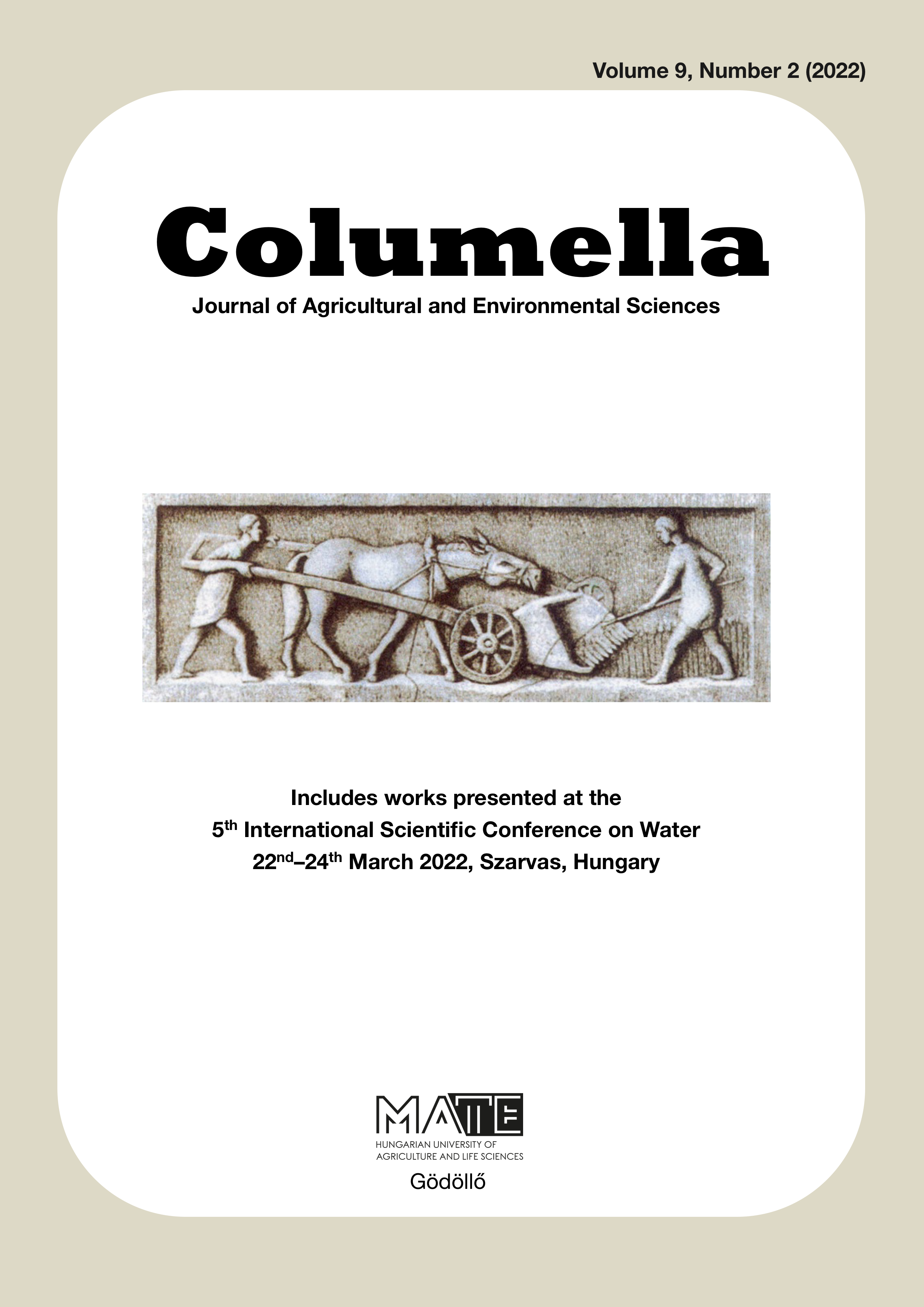Statistical analysis of excess water on drainage systems in the northern part of Serbia
DOI:
https://doi.org/10.18380/SZIE.COLUM.2022.9.2.191Keywords:
Key words: Еxcess water, drainage systems, statistical analysisAbstract
Drainage systems in Serbia are mainly designed to evacuate excess water generated in the winter-spring period, which occurs as a result of snow accumulation during the long and wet winter and its sudden melting with the parallel appearance of spring rains. Dimensioning of the drainage system is done in such a way as to satisfy the needs of draining the design excess water, which is usually calculated using the water balance. Applying statistical analysis based on distributions of probability, the results of the future occurrence of excess water can be predicted. The paper tests the distribution that best corresponds to the empirical distribution of excess water obtained by applying the water balance. The Kolmogorov-Smirnov, Anderson-Darling, and χ2 tests were used to test a number of theoretical distributions, and basis on those tests Generalized Extreme Value (GEV) distribution was selected, which is often used in hydrological analyzes. The probabilities of excess water on drainage systems for the return period of 5, 10, 50, and 100 years were obtained. The results of the calculations can be used in the reconstruction of existing drainage systems, since most of them were designed more than 50 years ago, or in the planning and design of new drainage systems.
References
Adams, B. J., Fraser, H. G., Howard, C. D. D., & Hanafy, M. S. (1986). Meteorological Data Analysis for Drainage System Design. Journal of Environmental Engineering 112(5), 827-848. doi: https://doi.org/10.1061/(asce)0733-9372(1986)112:5(827)
Belić,S.,&Savić,R. (2005). PumpingstationsondrainagesystemsinVojvodina. Novi Sad, Serbia: University of Novi Sad, Faculty of Agriculture, Department of Water Management (in Serbian).
Belić, S., & Stojšić, M. (1985). Dimensioning of pumping stations and the possibility of their current capacities for drainage of winter excess water on drainage systems of Vojvodina. Vode Vojvodine (in Serbian) 13(1), 301-318.
Gregorić, E. (2009). Canal network effects on the water balance in southeastern Srem. Journal of Agricultural Sciences, Belgrade 54(2), 118-134. doi: https://doi.org/10.2298/jas0902118g
Helmers, M., Christianson, R., Brenneman, G., Lockett, D., & Pederson, C. (2012). Water table, drainage, and yield response to drainage water management in southeast Iowa. Journal of Soil and Water Conservation 67(6), 495-501. doi: https://doi.org/10.2489/jswc.67.6.495
Li, X., & Chen, Q. (1990). Generalized Extreme-Value Distribution In Hydrology. Proceed- ings of the annual meeting of Japanese Society of Computational Statistics 4(1), 39-40.
Martins, E. S., & Stedinger, J. R. (2000). Generalized maximum-likelihood generalized extreme-value quantile estimators for hydrologic data. Water Resources Research 36(3), 737-744. doi: https://doi.org/10.1029/1999WR900330
Thornthwaite, C. W. (1948). An Approach toward a Rational Classification of Climate. Geo- graphical Review 38(1), 55-94
Downloads
Published
Issue
Section
License
Copyright (c) 2022 Milica Vranešević, Atila Bezdan, Boško Blagojević

This work is licensed under a Creative Commons Attribution-NonCommercial-NoDerivatives 4.0 International License.






